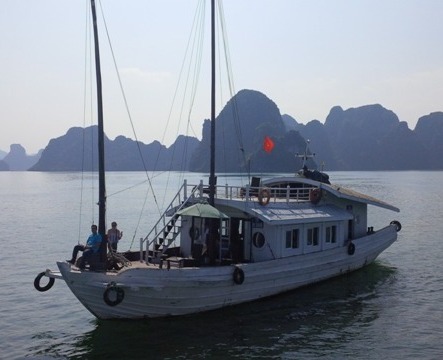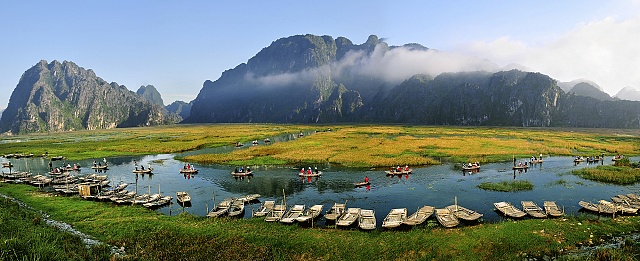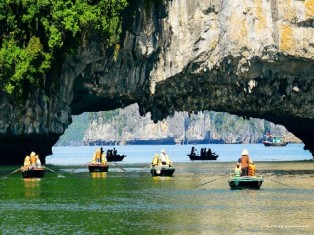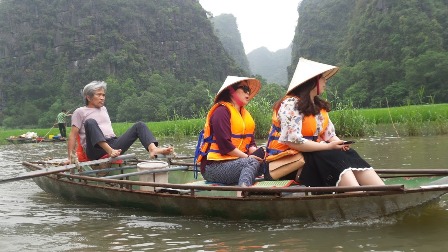When talking about traditional costumes of Vietnam, people often think of Ao Dai (long traditional dress of Vietnam). Ao Dai persists with time and becomes one of the icon for Viet people. The last Ao Dai that looks like today one appeared during 1930s in Hanoi and Saigon.
Ao dai is dress for all ages. It has become standard attire for formal occasions or National Holidays, wedding, new year, and graduation days, ect. Ao Dai is preferred because it intensifies the beauty and national pride.
Although the influence from East to West culture Ao Dai is still unique, elegant with two side cuts, with other designs. The dress represents at all major events, domestic and international beauty contests in Vietnam. Ao Dai was also selected as the outfits for leaders who attended the 2006 APEC summit in Hanoi. Ao Dai dress is more charming with palm conical hat Vietnam.
Ao dai is dress for all ages. It has become standard attire for formal occasions or National Holidays, wedding, new year, and graduation days, ect. Ao Dai is preferred because it intensifies the beauty and national pride.
Although the influence from East to West culture Ao Dai is still unique, elegant with two side cuts, with other designs. The dress represents at all major events, domestic and international beauty contests in Vietnam. Ao Dai was also selected as the outfits for leaders who attended the 2006 APEC summit in Hanoi. Ao Dai dress is more charming with palm conical hat Vietnam.






























